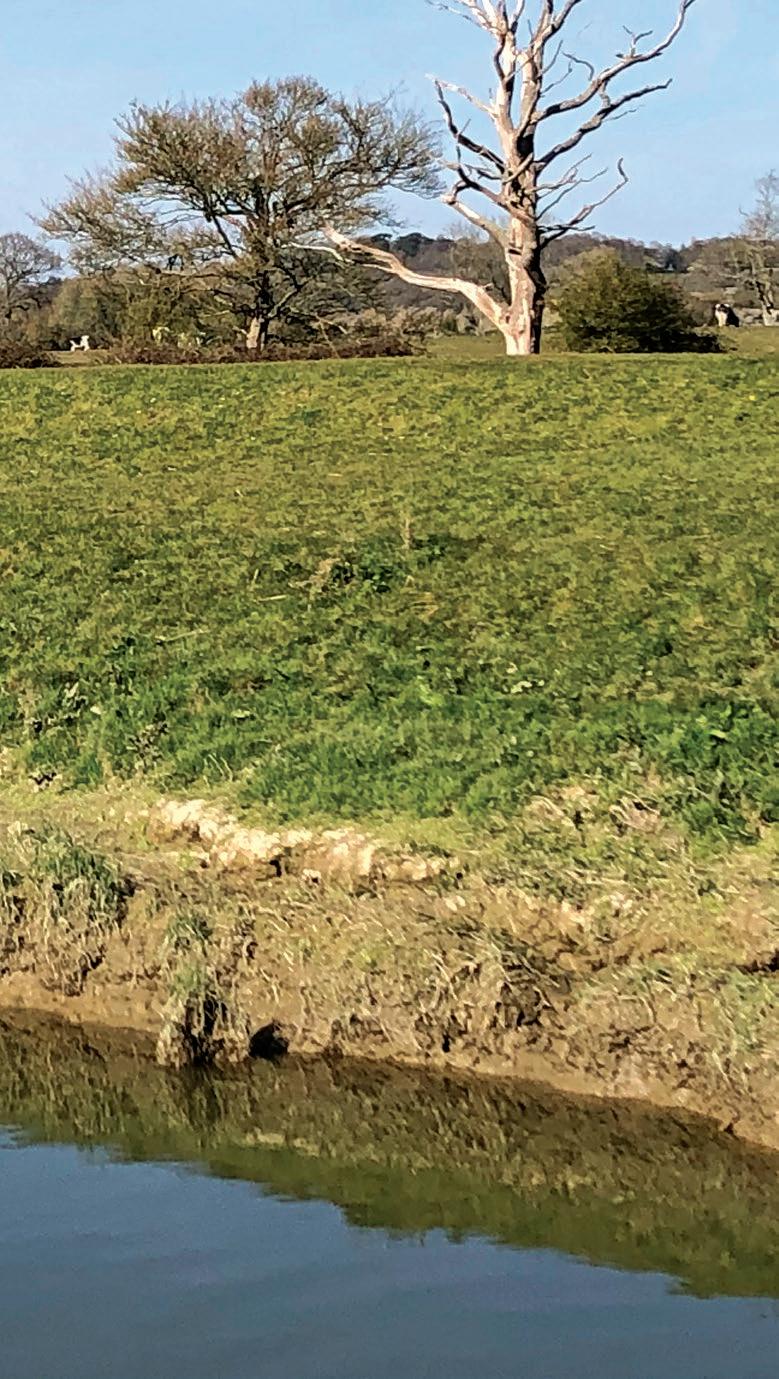
4 minute read
Biodiversity gain
ENVIRONMENTAL OPPORTUNITIES
Main Image:
Could your farmland be yielding more through environmental offsetting – an increasingly tradeable opportunity?
RUPERT BENDELL
Director Loxton Land 01225 904 903 rupert@loxtonland.co.uk

Farmers can help reconcile development with the environment, explains Rupert Bendall of Loxton Land
ENVIRONMENTAL gains needed by developers are creating farm diversification opportunities.
Environmental commodities which relate to water quality, carbon sequestration and biodiversity which may have historically been dismissed as having no tangible value, are now being recognised for their public benefits. Increasingly these environmental goods, or ‘natural capital’, are being measured and valued, allowing them to be bought and sold.
The introduction of Environmental Land Management (ELM) schemes is a sign of the Government’s growing focus on environmental protection. However, beyond this, the value of natural capital is being driven by other new regulations coming from the public sector. This is resulting in emerging marketplaces in the private sector, in turn creating diversification opportunities for landowners.
Trading platforms
One such example includes the nitrate and phosphate trading platforms that have been expanding from the south coast of England up into Wiltshire and the Somerset Levels. These have emerged as Natural England forces Local Authorities to ensure that development in their district has a neutral effect on water quality.
Another rapidly growing market is around Biodiversity Net Gain (BNG). The Environment Act 2021 has recently introduced a requirement on all new developments to demonstrate that they create at least a 10% ‘net gain’ in biodiversity.
So, why does this present an opportunity? These regulations are being enforced at the planning stage of a proposed scheme, meaning developers can’t get planning permission without having secured the solution to these obstacles first.

The commercial realities of development and the physical constraints of certain sites mean that not all developments will be able to achieve nitrate/phosphate neutrality or a net gain in biodiversity within the confines of the development itself.
Consequently developers will have to look elsewhere, thus opening the door to third party landowners who can use their natural capital to deliver these improvements off site.
This is already being seen in some areas through carbon sequestration agreements and district level licensing schemes to manage great crested newts.
How does it work?
Whilst the Government has chosen to use the Environment Act and other legislation as the ‘stick’ to force us to value our natural capital, it is the private sector that is creating the ‘carrot’ to deliver the solutions; in the form of marketplaces for the trading of environmental or conservation ‘credits’ or ‘units’.
Compared with public sector schemes such as ELS, HLS and Countryside Stewardship, which are inevitably fraught with red tape, the new credit-based trading systems are giving landowners the opportunity to exchange their credits via platforms in the private sector.
Landowners can provide environmental and ecological benefits on their land by selling credits, thereby providing developers and housebuilders with the ability to offset the impacts of new development schemes.
In many instances, the payments for these credits (typically made annually and linked to inflation) can outweigh the gross margin that would otherwise be earned from farming the land. The agreements can run from one to 30+ years and can be set up in a way that doesn’t prejudice the capital taxation position.
Wetlands and woodlands can be created and/or improved, which can have knock on benefits for ancillary activities like fieldsports. Grassland creation is another popular option and often the land can still be grazed.
The future
As conventional subsidies are phased out, the opportunity to secure long-term and stable income from the sale of environmental credits is becoming increasingly attractive. Dr Abigail Barker of Natural Capital Research

NATURAL CAPITAL MAPPING
A natural capital baseline is a powerful environmental business planning tool for estates and farms of different sizes, helping them enhance natural capital and access alternative markets, says Dr Abigail Barker, chief operating officer of Natural Capital Research.
As farmers, landowners and land managers prepare to tackle numerous changes to the way policy makers evaluate their operations and their right to support they will need to provide robust, accurate evidence of the enhancements they are bringing with carbon sequestration, the impact of different cultivation regimes, and emissions from their agricultural processes, for example.
Natural capital assets (landcover, topography, soils and water) will need identifying and measuring accurately and transparently, and tracking over time. This will help plan optimal land use, and could improve returns over regular crop rotations.
As more commercial entities take an interest in the environmental impact of producers, close, demonstrable tracking of net zero carbon strategies could also yield new opportunities for commercial contracts for grain, meat and dairy products.
Farmers will also need to measure ‘ecosystem service flows’ from their assets, such as carbon storage and sequestration, flood risk reduction, soil erosion prevention, recreation, pollination services, biodiversity and nature networks.
The NatCap Map online mapping tool draws on peer reviewed science to provide a natural capital baseline at 25m resolution for any area in England, Scotland and Wales.
It seems inevitable that initiatives like those relating to BNG are likely to become more onerous on developments moving forward. This creates growing opportunities for landowners who are seeking to diversify their income, be paid to invest in regenerative agriculture and make environmental improvements.

Biodiversity net gain, such as newt friendly habitats, is a fast-growing area for farmers and landowners










